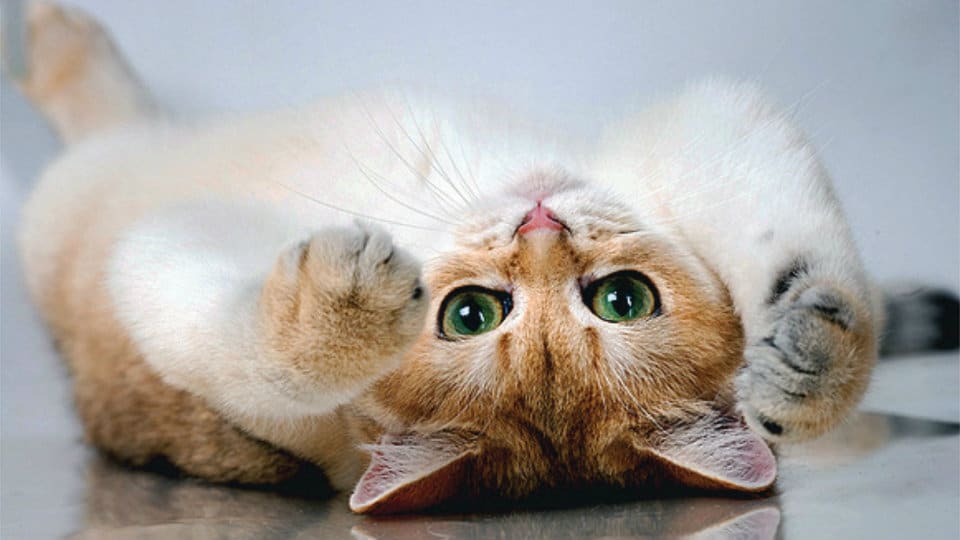By Maneka Gandhi
How can I determine a cat’s age?
- Check the cat’s coat for thickness.
- The coat of an older cat may be thin.
- Seasonal variations can occur. Summer coats are thinner than winter coats.
iii. Young cats will have smooth and full coats of hair.
- Older cats are more likely to have coarser hair.
- Some patches of grey hair may appear in older cats.
- Notice the cat’s body type.
- Young cats tend towards being lean and muscular, due to their high levels of activity.
- Middle age cats may be more filled out and round.
iii. Older cats will likely have pronounced shoulder bones and loose skin.
- Watch the cat’s mood. Older cats are more likely to have decreased vision and hearing, as well as suffer from pain caused by arthritis. These conditions can have an effect on your cat’s mood. If you notice the cat displaying these behaviours, it can be an indication that it is either ill, in the later stages of its life, or both:
- The older cat may act overly aggressive when you interact with it.
- Fear and anxiety can increase in older cats as well.
- Monitor your cat’s litter-box usage. If your cat has any problems using the litter-box, it may indicate a few different issues. Specifically, older cats may have trouble using the litter box due to health issues or decreased ability to handle stress.
- Some health issues that can cause trouble in older cats, when using the litter-box, are decreased vision, inflammatory bowel disease, and kidney or liver diseases.
- Stress can cause an older cat to not use its litter-box.
- Notice your cat’s sleep patterns. In most cats, as their age increases, so will the amount of sleep they require. You should also keep track of when it sleeps, looking for any changes to its schedule as it ages.
- Older cats may stay up all night and sleep during the day. Older cats may also howl at night.
- As cats age, their activity levels drop and they will spend more time sleeping. Younger cats will be more active, playing during the day, while older cats will want to rest.
- Look for any clouding. As your cat ages, its eyes may turn from being bright and clear to cloudy and dull. By examining the degree of cloudiness, or clearness, in your cat’s eyes, you can get a better understanding of how old your cat is.
- Clear and bright eyes will indicate that your cat is likely a young one.
- Older cats may have cloudy eyes due to age itself or the development of cataracts.
- Examine the iris. The iris is the colourful part of the eye that surrounds the pupil. By examining the iris, you can learn the approximate age of your cat. Look for any signs of jaggedness or roughness in the iris as you investigate.
- Younger cats will have clean and smooth irises.
- As cats age, their irises will become thinner and strands will start to appear in the iris, along with pigment patches.
- Monitor the eyes for discharge or tears. A sign of both age and health, the tear ducts in your cat’s eyes can be a great place to check up on your cat. At times, due to either aging, illness, or injury, its eyes may become overly runny. Runny eyes, as well as injury and illness, are more likely to be found in older cats, which can help you indicate your cat’s age.
- Younger cats should not have noticeable tears or discharge.
- Older cats may have apparent tearing or discharge from their eyes.
iii. Runny eyes can also be a sign of illness or injury, so check with your veterinarian.
- Count the cat’s teeth. As your cat ages, it will go through different stages of dental development. When your cat is relaxed and comfortable, try identifying the types of teeth it has, to get an idea of how old your cat is.
- The first teeth to grow in a kitten are the incisors (around 2-4 weeks) and canines (around 3-4 weeks), followed by the premolars (around 4-6 weeks).
- A cat younger than around four months will not yet have its molars.
iii. From the ages of around six months up to one year, your cat will have all of its adult teeth. At this point the cat’s teeth should be white and have no signs of wear.
- Look for yellowing of your cat’s teeth. As your cat ages, its teeth will start to show signs of that aging. Yellowing of the teeth can indicate that you cat is an older adult. The degree of wear, and yellowing, will indicate just how old your cat is likely to be.
- You can expect to see slight yellowing in your cat’s teeth at around two years of age.
- At ages three to five years old, your cat will have increased yellowing in its teeth.
iii. Between the ages of five to ten, yellowing will be easily visible.
- When your cat is ten or older it will show clear signs of yellowing, likely on all teeth.
- Check your cat’s teeth for signs of wear and tear. Another indication of age, that can be seen in your cat’s teeth, is how worn down they are. Carefully examine your cat’s teeth to look for any areas that may be worn, to help you determine how old your cat might be.
- Worn down teeth will have lost their points, appearing more dull than in a younger cat.
- Some teeth may have the points either worn or broken off.
iii. Generally, your cat will begin to show signs of tooth wear when it is five years old. If your cat is between five and ten years old, teeth will show clear signs of wear.
- At ages of ten years and beyond, heavy wearing down of the teeth will be apparent. Some teeth may be missing at these ages.
- The older a cat is, the more likely it is to have dental tartar and gum recession. This is a vague tool for aging because how quickly the teeth become dirty depends on the cat’s diet.








Recent Comments